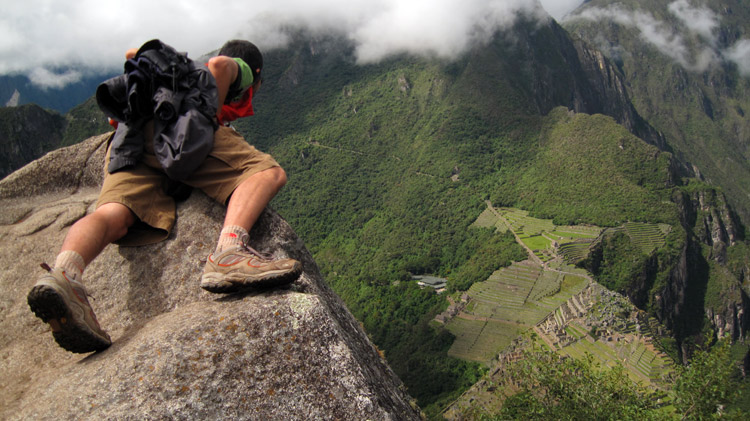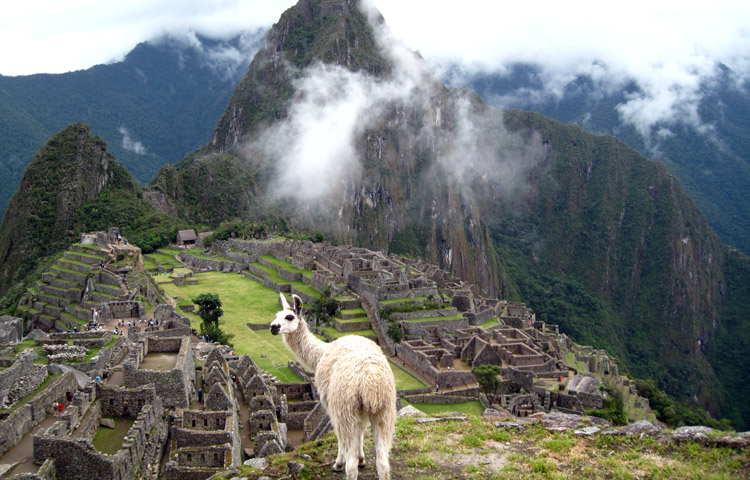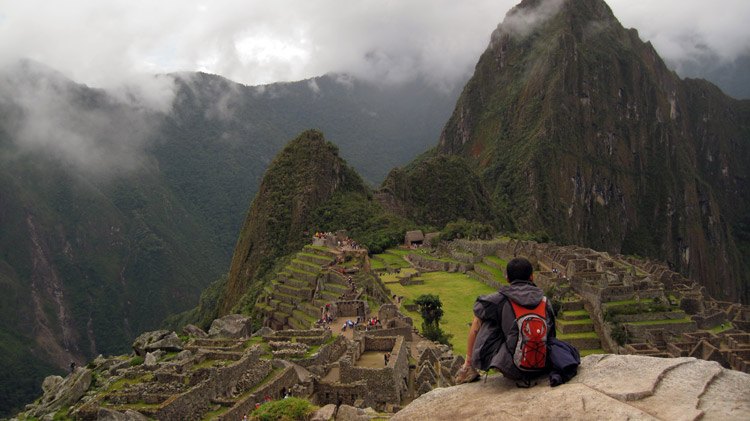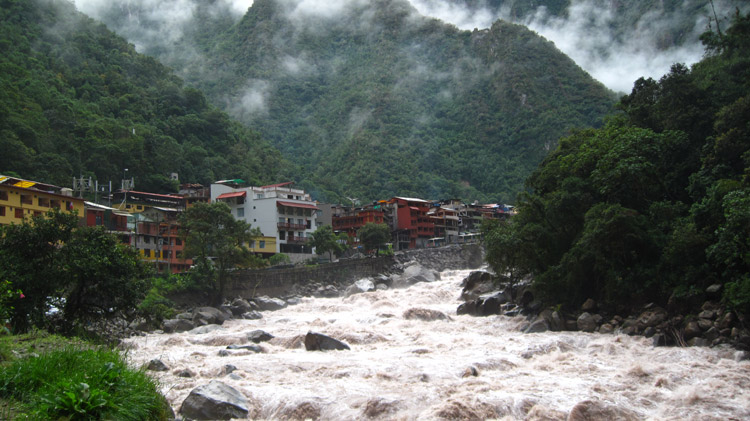The myth and mystery that is Machu Picchu will be forever concealed under the lost footprints of its Incan past. The splendid relics that do remain is simply awe-inspiring, as much for its magnificent architecture and jaw-dropping locale as for the sheer audacity of the Incans to even consider building a city here, let alone actually accomplishing the impossible feat. It remains where the Incan architects laid their plans, 8,000 feet high in the thin air of the Andes, yet surrounded by tropical jungle. After nearly 500 years, it survives alone as the only site unblemished by the Spanish greed and spoliation (because they never founded); standing solemnly to echo the tale of the ancient Incans.
After the previous evening tortuously dangerous hike, the intrepid/insane group arose at 4:30 in the morning to queue up for tickets to Machu Picchu before the crack of dawn. Despite not having eaten a proper meal in some 30 hours, a few of us decided to head straight for Wayna Picchu peak perched behind the ruins in the classic iconic photo of Machu Picchu. The climb is extremely steep well over a thousand feet above the ruins themselves. After an hour of difficult climb we were treat to a most glorious view of the entire region as the fog drift to and fro, covering and uncovering the monuments below.

I remained atop Wayna Picchu for well over two hours to explore its subtle cracks and crevices, impressive architecture, and spectacular panaramic views. It is said that the Incan high priest resided here, and would ritually descend to Machu Picchu in the pre-dawn darkness to ceremoneously usher in the Sun God each day. One can imagine the perilous journey down in the clouded darkness.

Around 10 am, the fog finally broke sufficient to explore the remainder of Wayna Picchu — itself littered with classic Incan stone work, houses, terrace farms, temples, etc. I eventually descended back to the main site below to explore in detail. The aura and atmosphere of Machu Picchu is unmatched. Though, Angkor Wat as a whole has more impressive architecture, the indescribable location and terrain of Machu Picchu is utterly unique. The technical excellence and intricacy of the limestone dovetail each other with surgical precision; so much so that modern technology cannot duplicate their precision. The vast majority of the joints will not permit even a thin paper to penetrate.

From the main plaza, I then ascended the southewestern terraces where the Incan grew a vast variety of crops to support this mysterous citadel. To date, no one is sure what Machu Picchu was really built for, though there are numerous competing theories. What is known is that it became a bastion and refuge for the Incans after the Spanish conquest; though this refuge didn´t last long and soon after Machu Pichhu was abandon to time and forgotten memory until being ¨rediscovered¨ in 1911.

